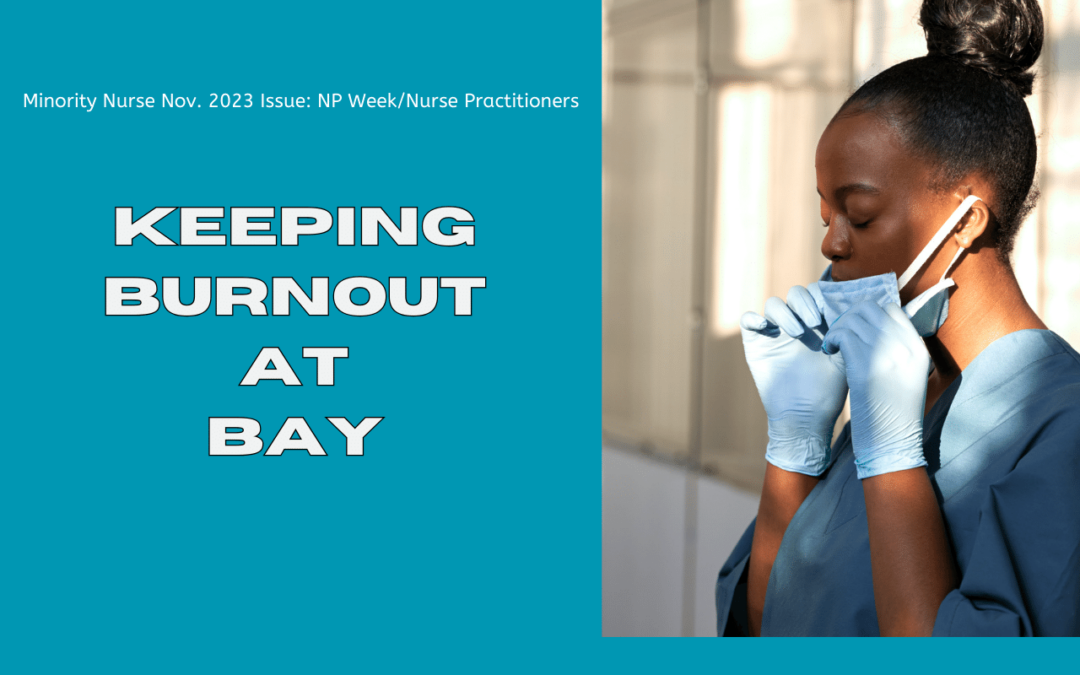Burnout can steal the enthusiasm, satisfaction, and joy that prompted you to become an NP. It can rob you of the joy of caring and potentially deprive your patients of the care they need.
As a nation, the U.S. can ill afford to have NPs burn out. A national survey of U.S. adults conducted by the American Association of Nurse Practitioners (AANP) in April 2023 found that more than 40% of respondents have experienced a “longer than reasonable” wait for healthcare. In a press release, 26% of those surveyed reported waiting more than two months to gain access to a healthcare provider. NPs, notes the AANP, can help fill that void.
At the same time, NPs deliver more of the care patients receive in the U.S., according to a study published in September in The BMJ. From 2013 to 2019, the researchers found the proportion of all traditional healthcare visits
delivered by NPs and physician assistants (PAs) increased from 14.0% to 25.6%.We’ll look at some factors that cause burnout and ways to prevent it from diminishing your enthusiasm or leaving practice entirely.
First, let’s take a brief look at the signs of burnout.
Signs of Strain
Burnout is characterized by emotional, physical, and mental exhaustion, notes April N. Kapu, DNP, APRN, ACNP-BC, FAANP, FCCM, FAAN, immediate past president of the AANP. A practitioner can feel less valued and lose interest in their work.
You may have trouble sleeping, experience tension and stress, and potentially have prolonged feelings of depression, according to Sunny G. Hallowell, PhD, APRN, PPCNP-BC, associate professor, pediatric nurse practitioner, M. Louise Fitzpatrick College of Nursing, Villanova University.
COVID Makes it Worse
While blaming the pandemic for NP burnout would be easy, burnout was a phenomenon before COVID. “What happened during the pandemic is the phenomenon of burnout, which has been consistently well documented in the healthcare literature for decades before COVID. Those events were exacerbated by the pandemic,” according to Hallowell. “It was already there. It just got so much worse.”
One data point of burnout before the pandemic comes from a study conducted in early 2018, which examined advanced practice registered nurses, including NPs and PAs. It found that 59% of respondents experienced or formerly experienced burnout. The pandemic “really blew everything up,” says Kapu, the study’s lead author, published in the Journal of the American Association of Nurse Practitioners.
Forces of Stress
Besides the pandemic, unhealthy work environments can lead to burnout. In those environments, notes Kapu, staff shortages continue to take a toll, overtime may be needed, and there needs to be more opportunity for professional growth, development, or change.
Furthermore, the back-and-forth involving full practice authority for NPs may also cause stress. During the pandemic, various states provided temporary waivers allowing full practice authority for NPs. Since then, some states have reverted to reduced or restricted practice laws. This sends a “mixed message,” notes Hallowell, breeding mistrust, uncertainty, and confusion.
“In states that have moved to full practice authority, we’ve seen an increase in the workforce; NPs enjoy working there,” says Kapu. “We’ve seen those states move up in terms of overall healthcare outcomes. The top five states in the U.S. in terms of healthcare outcomes are all states where nurse practitioners can practice to what they’ve been educated and trained to do.”
NPs might also suffer from stress in dealing with inexperienced healthcare colleagues. “The distribution of healthcare delivery has shifted in such a way that we have a lot of inexperienced folks at the frontline now,” Hallowell notes.
“We need to create a structure to onboard and train and bring these new workers into the work environment, help them develop confidence in their skills, make sure that they’re competent in what they’re doing,” notes Kapu .” We’ve done this as nurse practitioners for years. We have onboarding, orientation, and training programs, and we support them through that so that they feel competent and integrated into the team. They have a supportive environment where they can reach out and ask questions as needed.”
Self-care is Key
When it comes to preventing burnout, tactics involve self-care, notes Hallowell. They include:
- Rest.
- Asking for help. Hopefully, you can call on experienced colleagues who can provide emotional support to offset the stress, demands, and mental load of patient care.
- Requesting training. If you are doing something unfamiliar, ask for education.
- Exercise.
- Good nutrition.
- Having interests outside the profession.
- Socializing with friends and family
- Mindfulness.
“We need to make sure that we recognize the signs and symptoms and then determine what will be our change,” says Kapu. “Do we need to work in a better environment? Can we help contribute to making our work environment better? What are we doing in terms of self-care?”
Addressing the exhaustion that can lead to burnout is similar to exercising a muscle, notes Kapu. “You work a muscle to a critical mass and then recover. That’s how it gets stronger. It’s the same thing with stress,” she notes, where some stress is good, but it may get to a point where you have to take time away.
“We have to give ourselves time to recover, to refuel, to constantly check in and say, Am I taking care of myself so I can bring my very best self to my patients?”
- Meeting Mental Health Needs - April 25, 2024
- Nursing Informatics: Connecting Tech with Care - March 22, 2024
- Practical Strategies for Implementing Evidence-Based Practice - February 22, 2024




